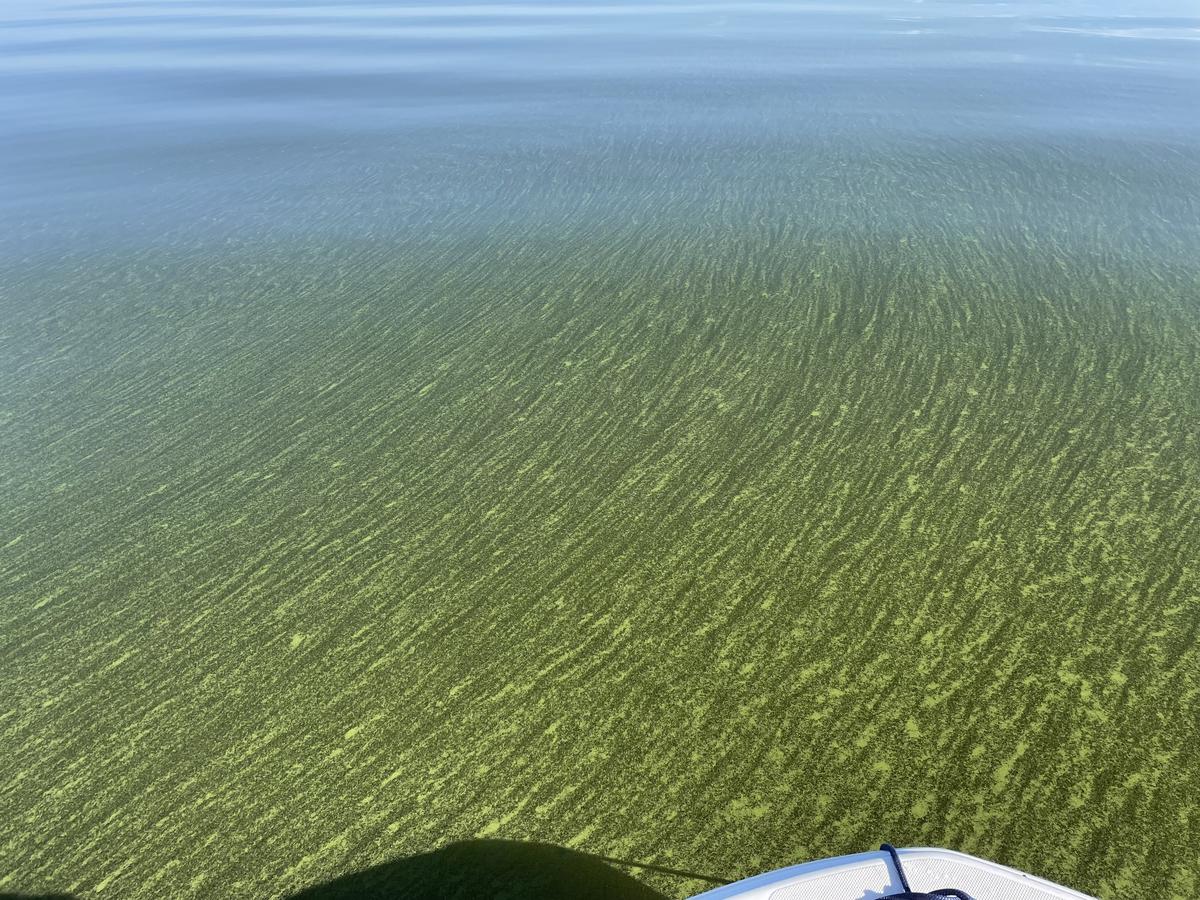
Cyanobacterial harmful algal blooms (cHABs) have continued to increase in frequency in Lake of the Woods. Image credit: Kaela Natwora.
Lake of the Woods is a relatively shallow and irregularly shaped lake that occupies parts of Minnesota and the Canadian provinces of Ontario and Manitoba. Minnesota tourism touts the lake as the Walleye Capital of the World and it provides drinking water for more than 750,000 people. But like other lakes, it has a cyanobacteria problem. The Minnesota waters were declared impaired in 2008 and despite mitigation efforts, cyanobacterial harmful algal blooms (cHABs) have continued to increase in frequency, duration, and toxin production.
Although cyanotoxins are routinely measured in Lake of the Woods, it is unknown which specific organism(s) are producing cyanotoxins. This project seeks to decipher who the toxin-producing culprits are and how they respond over a growing season.
Project description
This project seeks to identify which cyanobacteria in Lake of the Woods are toxin-producing and how they respond over a growing season.
Lake of the Woods is a relatively shallow and irregularly shaped lake that occupies parts of Minnesota and the Canadian provinces of Ontario and Manitoba. The lake provides drinking water for more than 750,000 people and Minnesota tourism touts the lake as the Walleye Capital of the World. But like other lakes, it has a cyanobacteria problem.
Cyanobacteria, also called blue-green algae, are microscopic organisms found natually in all types of water. The algae use sunlight to make their own food and in warm, nutrient-rich (i.e., polluted) water, cyanobacteria can multiply rapidly, creating blooms that spread across the water's surface. Some cyanobacteria produce cyanotoxins, which are among the most powerful natural poisons known, according to the U.S. Centers for Disease Control.
The Minnesota portion of Lake of the Woods was declared impaired in 2008 and despite mitigation efforts, cyanobacterial harmful algal blooms (cHABs) have continued to increase in frequency, duration, and toxin production.
Although cyanotoxins are routinely measured in Lake of the Woods, it is unknown which specific organism(s) are producing them.
Funding
This project is supported by a Minnesota Sea Grant 2023 Fast-Track Grant.
Project team
Principal Investigator:
Cody Sheik
Associate Professor
Large Lakes Observatory
University of Minnesota Duluth
Lead scientist(s)
Cody Sheik
Associate Professor
Large Lakes Observatory
University of Minnesota Duluth